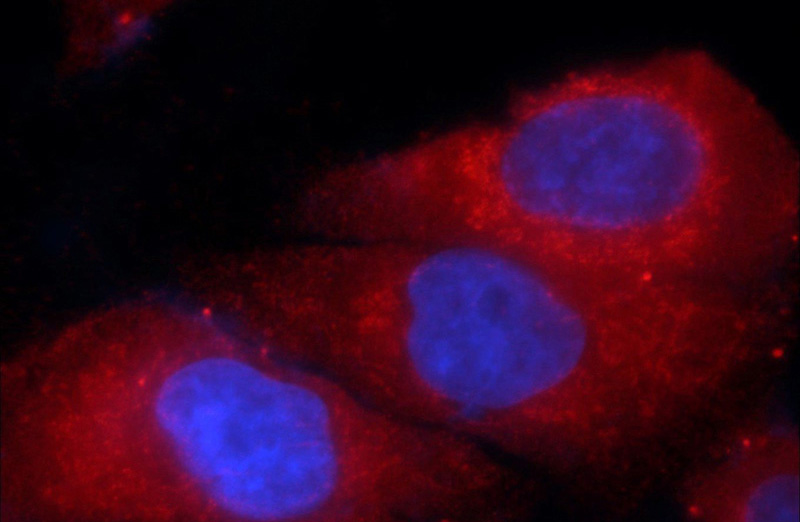-
Product Name
ITM2C antibody
- Documents
-
Description
ITM2C Mouse Monoclonal antibody. Positive IF detected in HepG2 cells. Positive WB detected in A431 cells. Observed molecular weight by Western-blot: 35kd
-
Tested applications
ELISA, WB, IF
-
Species reactivity
Human; other species not tested.
-
Alternative names
BRICD2C antibody; Cerebral protein 14 antibody; E25 antibody; E25C antibody; integral membrane protein 2C antibody; ITM2C antibody; ITM3 antibody; PSEC0047 antibody; Transmembrane protein BRI3 antibody
-
Isotype
Mouse IgG2a
-
Preparation
This antibody was obtained by immunization of ITM2C recombinant protein (Accession Number: NM_001012516). Purification method: Caprylic acid/ammonium sulfate precipitation.
-
Clonality
Monoclonal
-
Formulation
PBS with 0.1% sodium azide and 50% glycerol pH 7.3.
-
Storage instructions
Store at -20℃. DO NOT ALIQUOT
-
Applications
Recommended Dilution:
WB: 1:200-1:2000
IF: 1:20-1:200
-
Validations

Immunofluorescent analysis of HepG2 cells using Catalog No:107355(ITM2C Antibody) at dilution of 1:50 and Rhodamine-Goat anti-Mouse IgG
-
Background
The Integral membrane protein 2C (ITM2C) is a type II integral transmembrane protein belonging to a family composed of at least two other members, ITM2A and ITM2B. ITM2C, often called transmembrane protein BRI3, is highly expressed in brain tissue. Yeast two-hybrid screen system revealed that BRI3 could interact with beta-secretase beta-amyloid protein converting enzyme (BACE)1 and the microtubule-destabilizing protein SCG10 (STMN2). It may play a role in TNF-induced cell death and neuronal differentiation. BRI3 was found to inhibit the various processing of amyloid precursor protein (APP) by blocking the access of alpha- and beta-secretases to APP, competitive inhibition of APP processing by BRI3 may provide a new approach to Alzheimer disease (AD) therapy and prevention.
Related Products / Services
Please note: All products are "FOR RESEARCH USE ONLY AND ARE NOT INTENDED FOR DIAGNOSTIC OR THERAPEUTIC USE"
